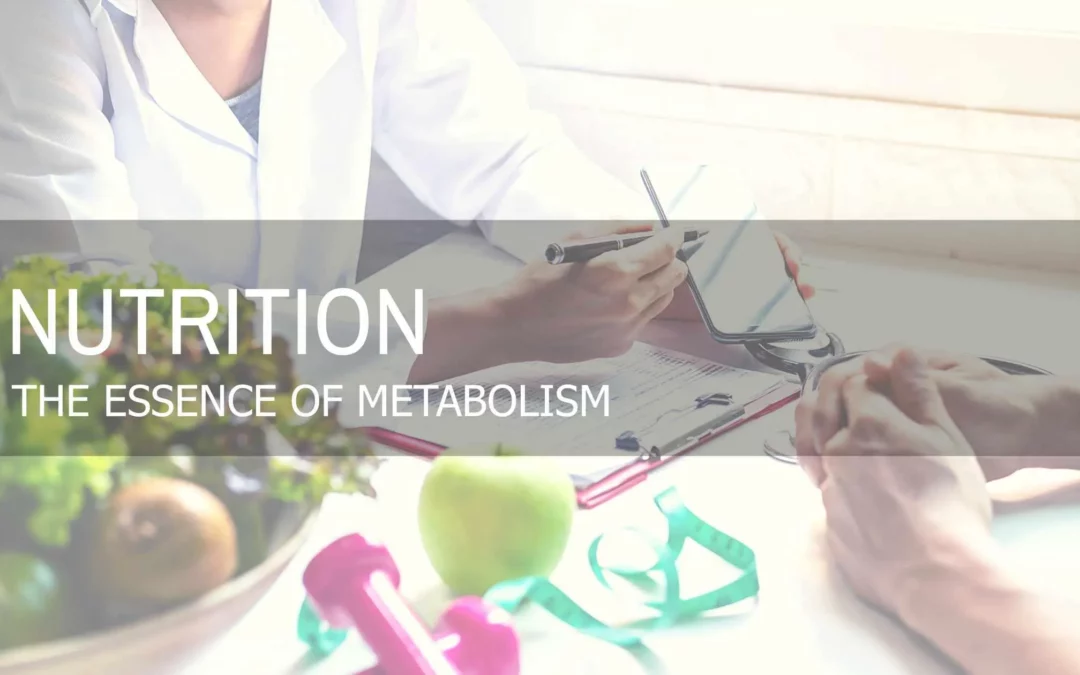The Essence of Metabolism – Overview
In order to optimize training, one needs the proper nutrition to sustain health and physical activity. The foods and beverages we consume can give us the energy to do so. We get energy from three main sources (macronutrients): carbohydrates, proteins, and fats, measured in units of kcal (or what we typically call “calories”). When consumed, both carbohydrates and protein contain 4 calories per gram whereas fat contains 9 calories per gram. Although all three provide energy, each has an individual but interconnected process such as current consumption/calorie burning (oxidation), storing for future use (storage) or to get rid of excess and waste (excretion): the essence of metabolism.
Carbohydrate Metabolism
First through the digestive process, carbohydrates are broken down into glucose, a central simple sugar used as a readily available energy source. As one digests food insulin (a hormone which helps to regulate glucose) is secreted from the pancreas as our blood sugar increases. After digestion is completed, the blood sugar decreases. The excess glucose that our body doesn’t needs gets converted into glycogen (short-term energy reserves which are stored mainly in the liver and muscles). To keep us moving and to maintain our blood sugar between meals, glucagon (another hormone which helps to regulate glucose alternatively with insulin) is secreted from the pancreas. It helps to breaks down glycogen from those same storages to feed our cells. If the balance of these two hormones is thrown off, then it could lead to diabetes.
When there is an excess in glycogen, it gets turned into fat (long-term energy reserves which are stored in the adipose tissue). This ultimately means that when too much glucose is present and insulin levels are elevated, it forces the body to prioritize using sugar as energy and prevents it from burning off fat stores.
On the other hand, if there is a deficiency in glucose, the body enters gluconeogenesis. Gluconeogenesis is the process of creating glucose from components of proteins and fats such as amino acids and fatty acids. In essence, our fat stores and muscles (if there is an insufficient amount of protein) are accessed for fuel. To note, a severe restriction of nutrient-dense carbohydrates (e.g. vegetables, fruits, some grains) can wreak havoc on the system, because they are the preferred source for readily accessible energy (fats and protein take longer to convert to energy) so the body will start to crave sugars in the long run.
Protein Metabolism
Next, proteins get broken down into amino acids in the digestive tract and are then used to make new tissues in the body. Every cell in your body is made of amino acids. There are two main categories of amino acids: essential and nonessential. Essential amino acids are those that you can only get from dietary sources while nonessential amino acids are created indigenously within the body.
Leftover protein either gets broken down into ketoacids or is excreted through urine. In regards to the ketoacids, they can be used to create glucose in the event that there is an energy deficit from the lack of carbohydrates.
Fat Metabolism
Finally, when we ingest fat, it gets broken down and stored as triglycerides. As the triglycerides go through the intestine, they further break down into glycerol and free fatty acids and combine with “other fats, proteins, carbohydrates, and cholesterol” to create lipoproteins. Lipoproteins are then broken down into free fatty acids to be stored in the liver, stored as body fat (as a long-term energy reserve and insulation), and as a fuel source for the muscles.
As was previously mentioned, fat is used as a backup energy source to carbohydrates. When the body has used up all the glucose and glycogen [look at Carbohydrate Metabolism for reference] it turns to fat stores for energy through the process of lipolysis. Lipolysis is the process of the breaking down of fats and lipids to be oxidized (burned off as energy with the help of oxygen).
Goal
- Journal stressed-based food choices for 2 days during the week and 1 weekend day. Record how many starches and sweets you consumed.
- Track all your macronutrients for the same time frame.
- Manage your macronutrients with the help of our calorie calculator and journal for the same number of days.
- Track your HRV and record your score from the prior day on your daily food journal for the same number of days.



